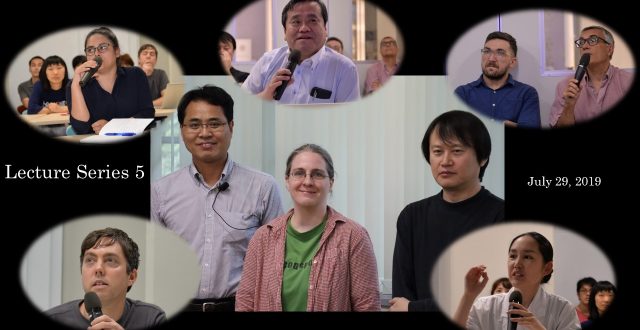
Report on the 5th WRHI Lecture July 29, 2019
Event Reportsおすすめ
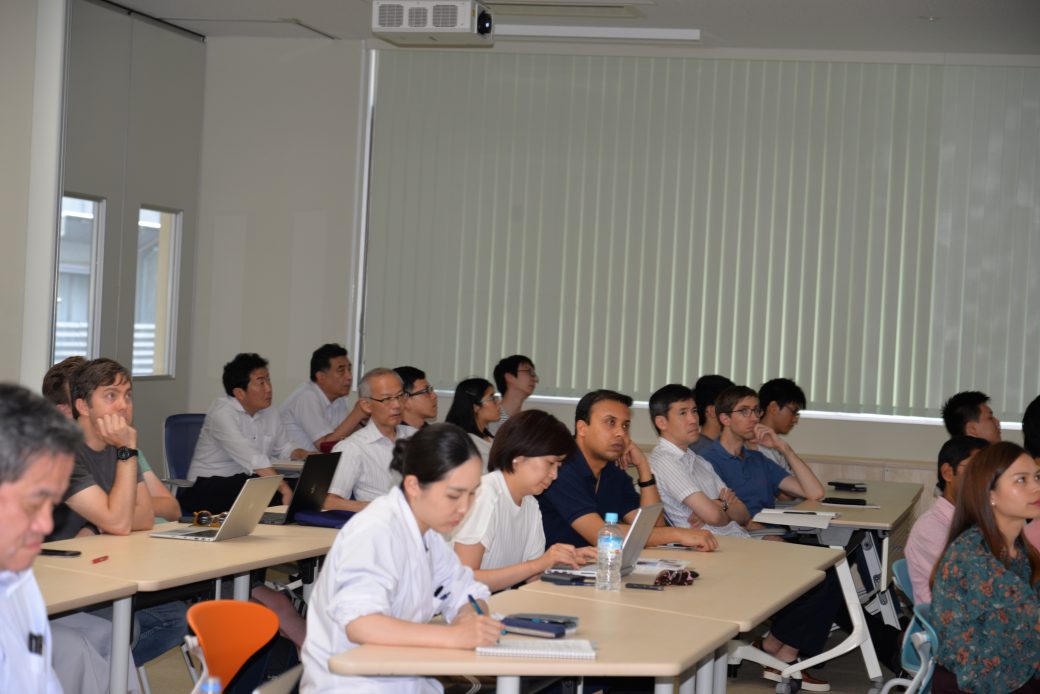
The 5th WRHI lecture was held on July 29th in the Open Communication Space of R2 building. In the WRHI Lecture Series, WRHI invited researchers who are active in the front lines of the world provide updates on the latest topics.
This time Dr. Takeshi Shimi and Dr. Jinhua Dong from Cell Biology group, and Dr. Silvia Haindl from Materials and Devices gave their talk. Moderator was Dr. Masaki Azuma who is the Professor of Laboratory for Materials and Structures (also WRHI Steering Committee Chairman). About 30 researchers attended the Lecture Series 5 and had hot discussions in the hot weather after the rainy season.
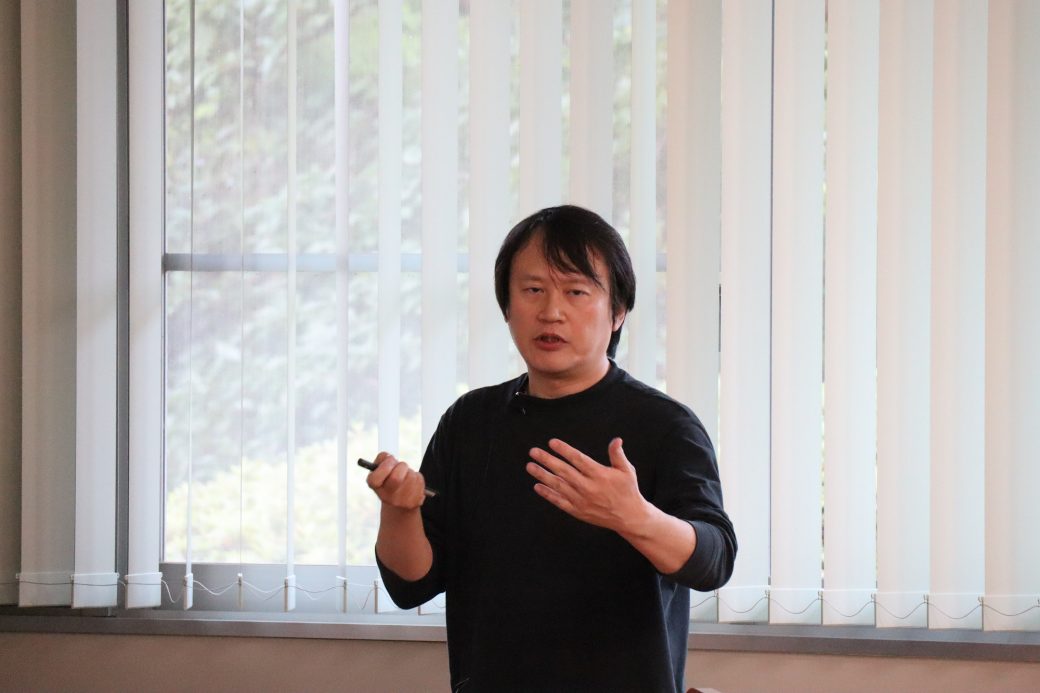
Dr. Takeshi Shimi
Nuclear lamins provide structural framework that anchors nuclear pore complexes
In mammalian cell nuclei, the nuclear envelope (NE) separates a mass of genomic materials from the cytoplasm. The nuclear lamina (NL) lines the inner nuclear membrane of the NE, which contributes to determining nuclear size, shape and stiffness, whereas nuclear pore complexes (NPCs) penetrate through the NE to facilitate nucleocytoplasmic trafficking of macromolecules. Nuclear lamins are the major structural components of the NL, and it is known that over 500 mutations in lamin genes cause a wide range of human genomic disorders called as laminopathies. Recently, Dr. Takeshi Shimi and his colleagues have discovered that lamins determine the structural frameworks that anchor NPCs. Their findings about the lamin-NPC interactions may provide a better understanding of the pathological mechanism of laminopathies.
Lecture Abstract
Nuclear lamins, type-V intermediate filament proteins, act as a key structural framework in the nuclear lamina (NL) that may anchor nuclear pore complexes (NPCs) and other constituents in the nuclear envelope (NE). We probe how lamin meshwork structure can determine the distribution of NPCs in wild-type (wt) mouse embryonic fibroblasts (MEFs) and changes after gene knockouts (KO) and knockdowns (KD) using three-dimensional structured illumination microscopy (3D-SIM) combined with sub-pixel computational image analysis and cryo-electron tomography (cryo-ET).
We show that NPCs follow the perimeter of lamin depleted holes in Lamin A/C (LA/C) and Lamin B1 (LB1) meshworks. Furthermore, our multi-orientation image analysis and averaged cryo-electron tomography reveal that the centers of NPCs lie between 65 and 100 nm from lamin fibers, a distance slightly greater than the NPC radius and reveal structural details about the molecular interactions between lamins and the nucleoplasmic ring of the NPC. We also find that KDs of nucleoporins forming NPCs such as Nup153 and Elys alter the spatial relationship between NPCs and lamins. These results indicate that LA/C and LB1 are required for regulating the normal organization of both lamin meshworks and NPCs in MEFs and act through specific nucleoporins.
Our quantitative approach combining 3D-SIM, cryo-electron tomography and computational image analysis may shed light on the physiological properties of and pathological changes in lamin-NPC interaction.
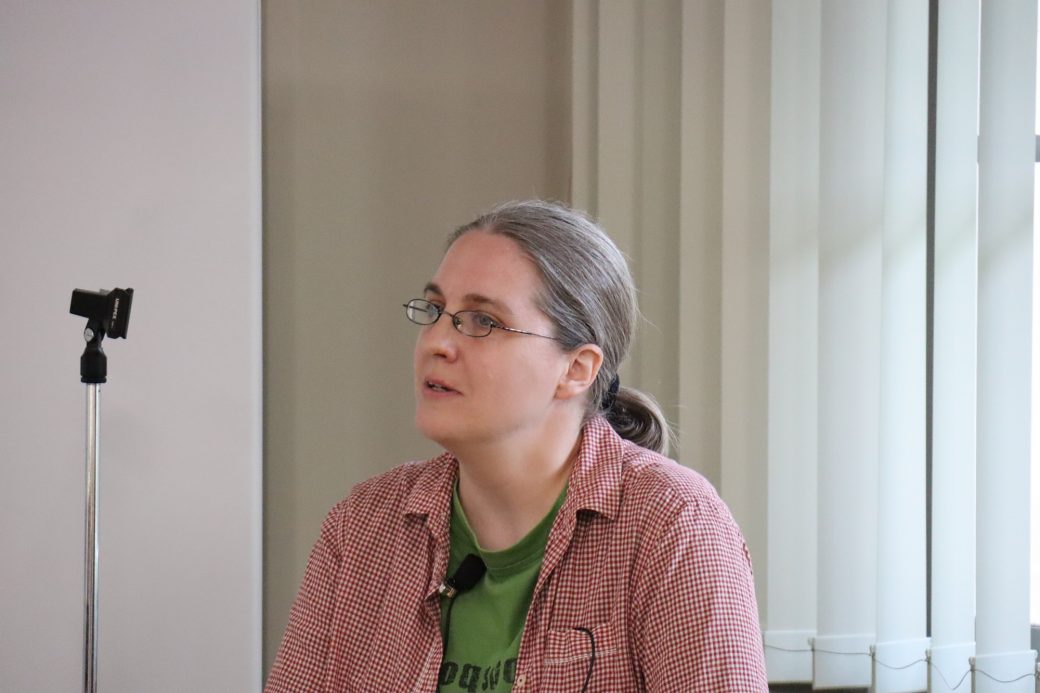
Dr. Silvia Haindl
Superconductivity meets Magnetism
Dr. Silvia Haindl has been studying superconductivity and she is one of the leading experts in Fe-based superconducting thin films. In her lecture, she overviewed the coexistence of superconductivity with magnetism. She also talked about her current research on Fe-based superconducting thin films and their potential use in electronics and information technology.
Lecture Abstract
With their richness of electronic phases and interactions the Fe-based superconductors (Fe-pnictides and Fe-chalcogenide compounds) are offering an attractive playground in modern condensed matter physics. Thin film research of Fe-based superconductors is mainly devoted to:
FeSe (anti-PbO-type structure; space group: P4/nmm),
BaFe2As2 (ThCr2Si2-type structure; space group: I4/mmm), and
Fe-oxypnictides: LaOFeAs or SmOFeAs (ZrCuSiAs-type structure; space group: P4/nmm).
Fermi surfaces and electronic properties of these compounds are largely determined by the Fe 3d states and orbitals. The electronic states and orbitals, and thus the electronic properties, change upon the application of external forces or after doping the system with charge carriers. A superconducting phase often emerges after the application of pressure, strain or after chemical substitution in the vicinity of an (itinerant) antiferromagnetic phase. The presence of spin fluctuations is thus seen as a possible origin for an unconventional Cooper pairing mechanism (non-BCS) in these compounds.
The lecture introduces first superconductivity and magnetism as two macroscopic quantum phenomena. While the experience with magnets dates back to early human history, our full understanding is grounded in concepts developed by electrodynamics and quantum theory (orbital and spin magnetic moments). Superconductivity was discovered and has been experienced only after low temperatures became accessible using cryogenics (liquefied gases). The fundamental properties of superconductivity (perfect conductivity, perfect diamagnetism and flux quantization) are covered within the famous Bardeen-Cooper-Schrieffer (BCS) theory. Within this theory, the formation of so-called (conventional) Cooper pairs is described. The lecture discusses Cooper pair breaking in magnetic fields or in the presence of magnetic moments which lead to the notion of superconductivity and magnetism as two strictly opposing states. Different scenarios of so-called unconventional Cooper pairing however exist where superconductivity can either survive magnetic fields or requires the presence of spin fluctuations as effective pairing glue.
Thin films and interfaces of Fe-based superconductors can be seen as an ideal testbed for such unconventional pairing scenarios and the exploration of the interplay between magnetism and superconductivity. The lecture gives a brief outlook on current research directions and future technological applications.
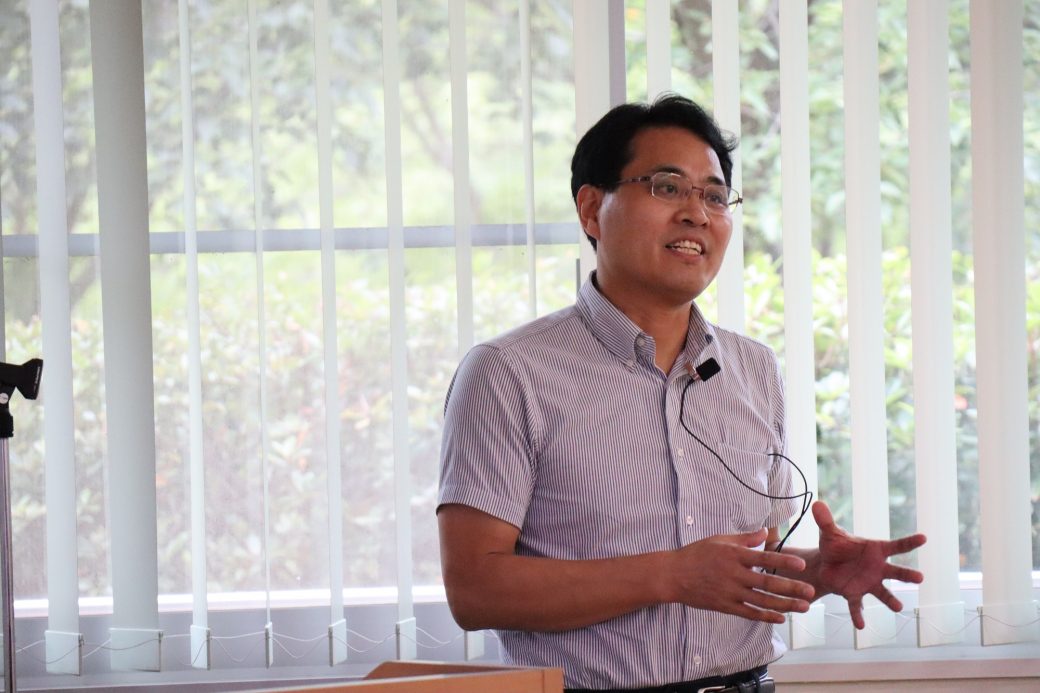
Dr. Jinhua Dong
Antibody Engineering for Exploring Novel Analytical Technologies and Medicines
Antibodies are very useful tools in medical field. In this lecture, Dr. Jinhua Dong introduced his research on antibody engineering for diagnoses and therapeutics. Unique antibodies developed by Dr. Dong might provide novel medical technologies.
Lecture Abstract
Antibodies are important molecules in the adaptive immune system of vertebrates. It recognizes antigens with high specificity and high affinity and can therefore be used for substance detection and identification. Antibodies are not only used as immunosensors, but also as medicines for the treatment of cancer, autoimmune diseases, etc.
In this lecture, Dr. Dong introduced the details of the phage display technology and the unique antibody antigen-binding fragment display system pDong1. Using pDong1 system, he developed a number of antibodies, including antibodies against the highly pathogenic H5N1 virus, antibody against 13-E,E-HODE, a specific product of radical-mediated oxidation from linoleic acid, and antibody against mucin. Using the developed antibodies, he developed detection techniques for antigens based on the principle of open sandwich immunoassay. He also developed the Quenchbody (Q-body) for detection of amyloid beta that is a biomarker for Alzheimer’s Disease. Q-body is an antibody fragment labeled with fluorescent dye near the antigen-binding site that can detects substances quickly and with high sensitivity. It is a new type of immunosensor based on photo induced electron transfer and is expected to enable the rapid development of low-cost and practical measurement systems. Finally, Dr. Dong introduced his latest research results in antibody medicine development.
